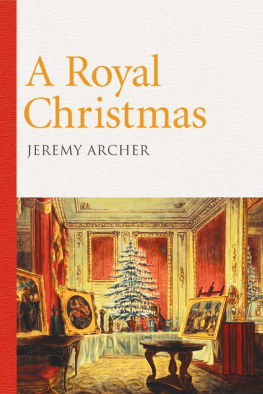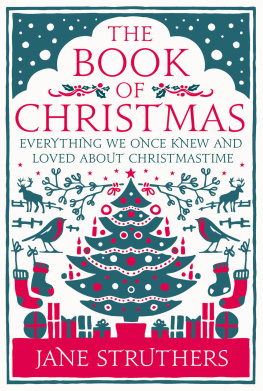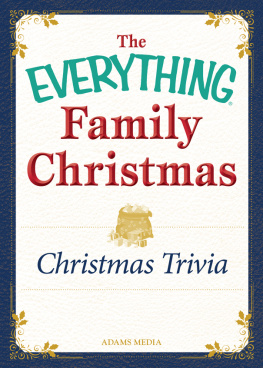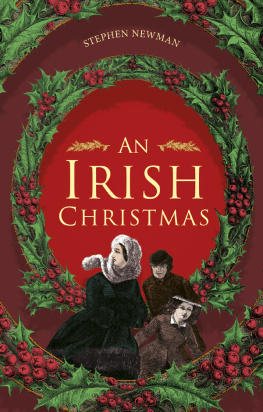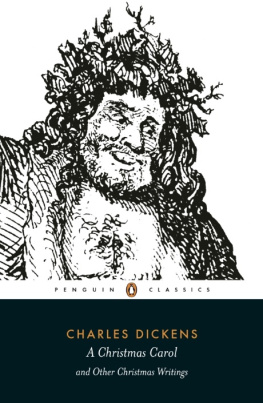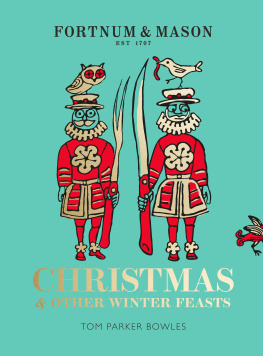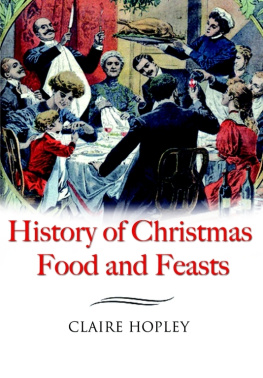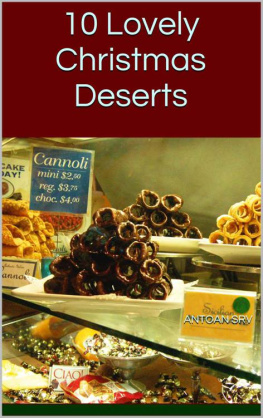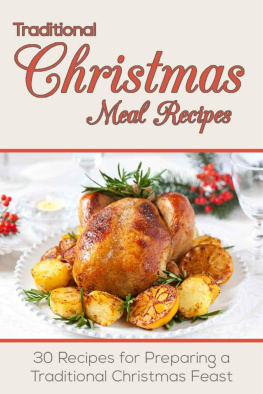A Royal
Christmas
JEREMY ARCHER

First published 2012 by Elliott and Thompson Limited
27 John Street, London WC1N 2BX
www.eandtbooks.com
ISBN: 978-1-908739-22-3
epub ISBN: 978-1-908739-23-0
Text Jeremy Archer 2012
The Author has asserted his right under the Copyright, Designs and Patents Act, 1988, to be identified as Author of this Work.
All rights reserved. No part of this publication may be reproduced, stored in or introduced into a retrieval system, or transmitted, in any form, or by any means (electronic, mechanical, photocopying, recording or otherwise) without the prior written permission of the publisher. Any person who does any unauthorized act in relation to this publication may be liable to criminal prosecution and civil claims for damages.
9 8 7 6 5 4 3 2 1
A CIP catalogue record for this book is available from the British Library.
Printed and bound in the UK by TJ International
Typeset by Marie Doherty
Jacket designed by Antigone Konstantinidou
Acknowledgements
T hrough the good offices of Sir Tom Shebbeare, Director, The Princes Charities, I was very fortunate to be granted privileged access to The Royal Archives. Pamela Clark, Registrar, and Jill Kelsey, Assistant Registrar, soon identified a wealth of hitherto-unused original material, answered my questions and recharged my research trolley. David Ryan, Director of Records, The Royal Household, offered me a great deal of helpful advice, while Leslie Ferrar, Treasurer to Their Royal Highnesses The Prince of Wales and The Duchess of Cornwall, and Nicola Brentnall, Project Director, The Princes Charities, both assisted me with procedural matters. Meanwhile, Karen Lawson of The Picture Library, The Royal Collection, guided my search for illustrative material.
Beyond The Royal Archives, I am extremely grateful to Celia, Lady Webb-Carter for introducing me to her father, Lord Wigram; to Lord Wigram himself for sharing his experiences of Christmas at Sandringham in 1926 with me; to the distinguished Royal biographers, Hugo Vickers and Sarah Bradford, for their advice and guidance; to Michael Hunter, English Heritage Curator at Osborne House, for sharing his own research with me; to Lord Fellowes and Marcus OLone, the Agent at Sandringham, for their helpful suggestions; to Francis Fulford for lending me his fathers war-time diaries from Windsor Castle; to Adrian Woodhouse, Archivist at Renishaw Hall, for identifying a number of relevant items in the Sitwell Papers; and to Chip Stidolph, Charlotte Zeepvat, Sophie Dupr and Ian Shapiro for kindly digging deep into their own private collections on my behalf.
In terms of the finished product, I would like to thank my old friend, Ashe Windham, for checking the typescript; Chey Palacios for carrying out the initial proof-reading exercise; Russell Harris for allowing me to borrow so many books from his library; and Christina Murray of The Castle of Mey Trust for sharing her own publishing experiences.
A Royal Christmas would never have been brought to fruition without the support of the team from Elliott & Thompson: chairman Lorne Forsyth; publisher Olivia Bays; reader Carol Anderson; designers Antigone Konstantinidou and Marie Doherty; and publicist Alison Menzies. Once again, I must thank my agent, Roger Field, without whom it is most unlikely that I would ever have been a published author.
It was always my wish to use A Royal Christmas in Diamond Jubilee Year to raise funds for charity. To that end I would like to thank Major-General Evelyn Webb-Carter, Major-General Martin Rutledge, Sean Bonnington, Rowena Finch and Elizabeth Crawford of ABF The Soldiers Charity, who have supported the book, thereby raising money for the ABF.
Last but not least I would like to thank my ever-tolerant wife, Amanda, for permitting me to write five books in as many years, stealing time from the family in the process.
Contents
The Time of Gifts
The Death of the German Emperor Frederick III, 1888
Introduction
A s well as describing the many and varied ways in which the Royal Family has celebrated Christmas through the ages, A Royal Christmas explores the influence that they have had on the way in which Christmas is celebrated today in Great Britain and the Commonwealth.
Since the evolution of Royal Christmases mirrored the changes that were taking place in the Royal Family and the country I felt that it was necessary to provide a measure of historical background, not only to the Royal Family, but also to contemporary developments and the prevailing mood that inevitably influenced their Christmas celebrations. The cast of characters is a long and very varied one, with family nicknames often disguising those who appear in diaries and journals. I have done my best to open such doors, without endless repetition.
On the basis that descriptions of chronologically-arranged Christmases might become rather dull, the subject matter has therefore been broken down into a series of themed chapters, some of which are inevitably rather longer than others. An attraction of this approach is that A Royal Christmas can be read in bite-sized portions. My intention was always to produce a Christmas pudding that enfolds as many silver threepenny pieces as I could unearth.
What comes over most strongly from Queen Victorias Journals is the importance of family: the joys they shared, the trials they endured and the carefully-selected gifts that Victoria and Albert exchanged. While the thread of A Royal Christmas is that of a family celebrating Christmas, tragedy is a common bed-fellow, particularly in earlier times, when oppressively cold and damp weather was so much more difficult to avoid, while medical treatment was far more primitive than it is today. On 26 April 1948, in his Royal Silver Wedding sermon in St. Pauls Cathedral, the Archbishop of Canterbury said: The Royal Family has borne with all other families its own share of domestic griefs and burdens. In the interests of a rather broader narrative, I have therefore extended my catchment area to the whole of December and a month after Christmas Day.
His second son was of like mind.
While researching at the Royal Archives, in the Round Tower at Windsor Castle, I had the enormous privilege of being allowed to handle, read and transcribe original diaries, journals, letters, cards and manuscripts written by members of the Royal Family and the Royal Household. I had the strongest sensation, when holding Queen Victorias first hand-written journal or King George Vs final diary, that I was cradling history in my hands.
Hugo Vickers, Elizabeth The Queen Mother, London: Arrow Books, 2006, p. 272.
Harold Nicolson, King George the Fifth: His Life and Reign, London: Constable & Co., 1952, pp. 2556.
Medieval and Tudor Christmases
A lthough Christmas had been widely celebrated before the Norman invasion of these islands, the Anglo-Norman kings introduced increased splendour at this festival, as they did on all other occasions; the king wearing his crown and robes of state, and the prelates and nobles attending, with great pomp and ceremony, to partake of the feast provided by their monarch, and to receive from him presents, as marks of his royal favour; returning, probably, more than an equivalent. The cynic might suggest that this was merely a subtle way for the sovereign to bestow favour, while accepting homage from his loyal servants, under the guise of a religious festival.
Having triumphed at the Battle of Hastings on 14 October that year, King William I, the Conqueror, was crowned in Westminster Abbey on Christmas Day 1066. The occasion was recorded in verse in The Kentishmen with Long Tayles, also known as the Kentish Ballad, sung to the tune of Rogero:

